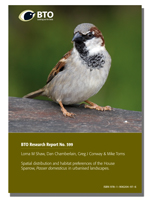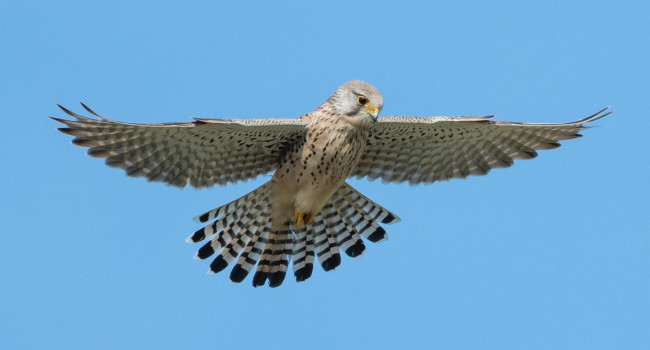Spatial distribution and habitat preferences of the House Sparrow, Passer domesticus in urbanised landscapes.
Lorna M. Shaw, Dan Chamberlain, Greg Conway & Mike Toms (2011)
BTO Research Report 599
Abstract:
The House Sparrow Passer domesticus has declined in urban areas across Europe since the late 1970s and is now listed as a species of conservation concern. Recent research into the causes of decline suggests that breeding populations may be influenced by a number of urban habitat features. These include pollution levels, insect abundance, nest site availability and the presence of predators.
Here we examine how the presence of certain features within the urban environment relates to the location of House Sparrow colonies. We do this by comparing the distance between actual nest sites and features of interest, with that between the same features and a series of randomly-generated points. We also test the preferences of House Sparrows for a number of habitat types by using compositional habitat analysis.
We found that houses with gardens were strongly preferred to any other habitat type. Interestingly, in more rural areas, allotments and greenspace were found to provide useful alternatives to houses with gardens. Predators and roads were not avoided, something that may be a result of their ubiquitous nature rather than any lack of detrimental impact. Mitigation measures to prevent the loss of House Sparrow breeding colonies should, therefore, concentrate on the maintenance and enhancement of quality urban gardens and the resources they contain. This may be of particular importance in the most densely populated urban areas. Find out more about our work on House Sparrows.







Share this page